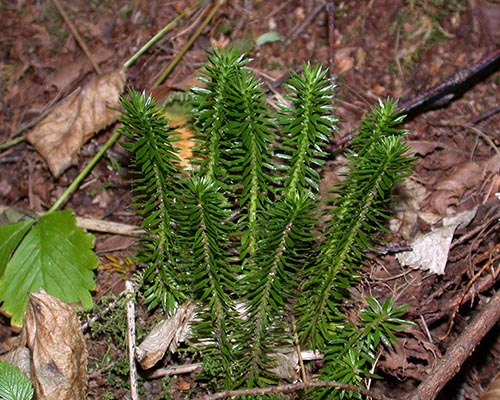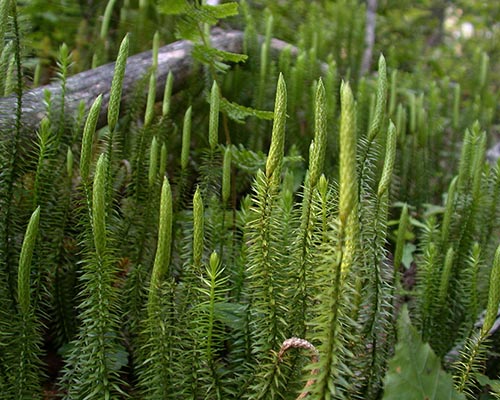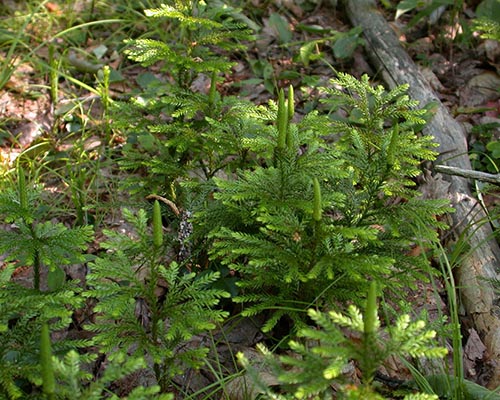The clubmosses and their relatives are the most ancient group of vascular plants — plants with specialized tissue called xylem that transports water and nutrients throughout the plant. The only plant groups with earlier origins are non-vascular, such as green algae, mosses, liverworts and hornworts. The clubmosses originated about 410 million years ago, long before the dinosaurs, and yet some 1,200 species of clubmosses still exist today.
This longevity illustrates that groups often thought of as “primitive” are sometimes actually the most successful and well adapted. By comparison, the great apes have only seven extant (living) species — two species of chimpanzee, two of gorillas, two of orangutans and humans — and all of those species except humans are presently in danger of extinction. Being a clubmoss appears to be a much better evolutionary strategy than being a great ape.
Transpiration draws water molecules upwards from the ground through the xylem of plants. This allows vascular plants to grow in somewhat drier environments than non-vascular plants and to grow taller as well. However, like ferns and other early vascular plants, clubmosses still require a moist environment for sexual reproduction because their flagellated sperm must swim through water to reach the egg. Clubmosses, as the earliest vascular plant group, have leaves with only a single vein of xylem down the middle, in contrast to the more complexly veined leaves of trees and even ferns. Nevertheless, clubmosses grew as high as 135 feet during the Carboniferous period, about 350–300 million years ago, with diameters of up to 6 feet. They played the ecological role of trees during that period. In fact, much of our modern supply of coal is the fossilized wood of tree clubmosses. A change in climate during the Pennsylvanian period that followed the Carboniferous led to the demise of those great clubmoss forests. Modern clubmosses are much smaller, often barely reaching a height of 1 foot.
Clubmosses can be identified by their superficial resemblance to miniature pine and cedar trees. They are low growing, with small, scale-like leaves. Most species of clubmosses prefer cool, shady and moist woodlands. They are not true mosses, which are non-vascular. Clubmosses are larger and taller. Clubmoss reproduction occurs through the dispersal of spores, found in sporangia, located singly or in groups, or in a yellow cone-like tip known as a strobilus. It can take up to 20 years for a clubmoss to mature and produce spores. Clubmosses have adapted to this setback by originating new above-ground plants through underground stems, allowing for faster growth — a strategy used by many other plants as well, such as quaking aspen (see Succession station).
Species of clubmoss seen on this trail include shining clubmoss (Huperzia lucidula), bristly clubmoss (Spinulum annotinum, also called stiff clubmoss), princess pine (Dendrolycopodium obscurum), and staghorn clubmoss (Lycopodiella cernua, not shown). Watch for these species as you walk through moist, shady woodlands.
Economic uses of clubmosses have limited their abundance in some areas. For example, clubmosses are commonly collected to make wreaths. Humans have also used the dried spores of clubmosses for a variety of purposes, such as flash powders in fireworks, lubricants for machine parts, fingerprint powders, coatings for pills and stabilizers for ice cream. This “lycopodium powder” was once common as a lubricant on skin-contacting latex such as condoms. Unfortunately, about 15 percent of humans are allergic to clubmoss spores.



